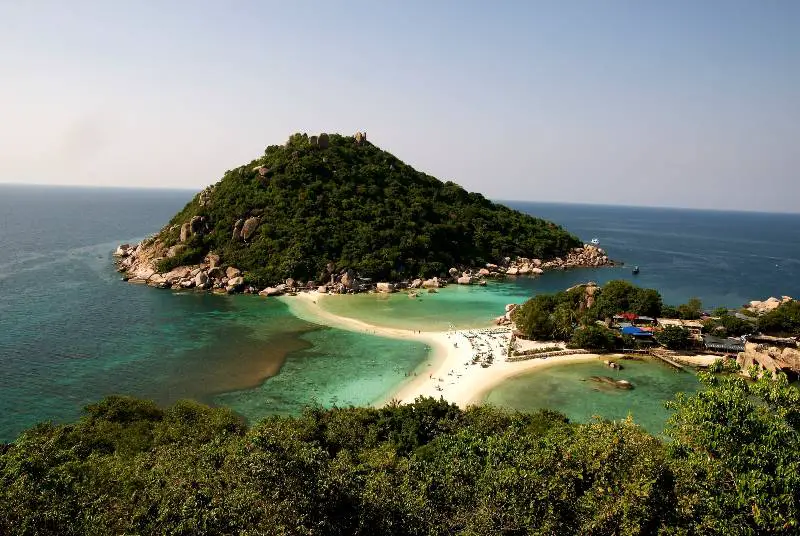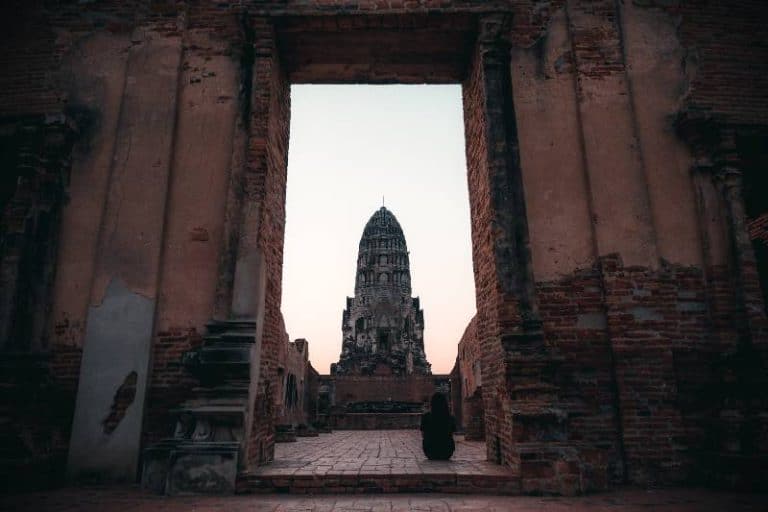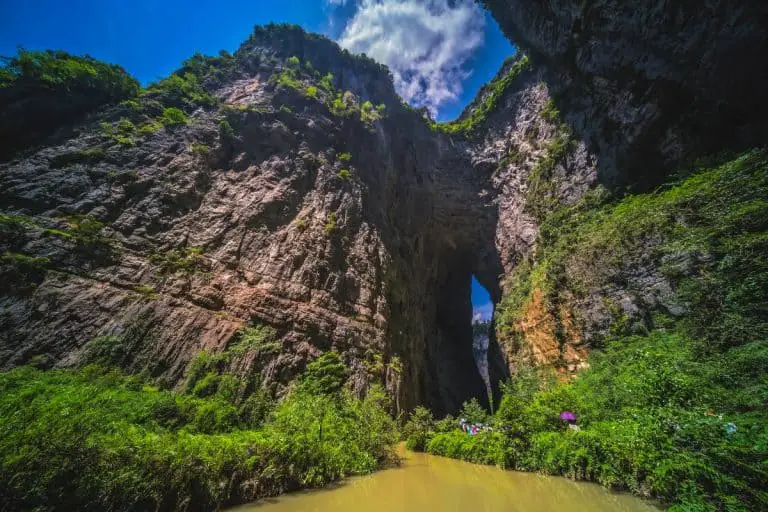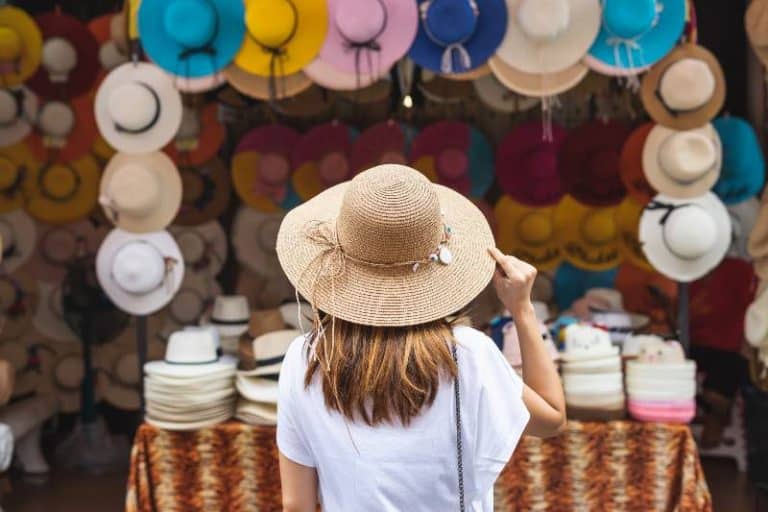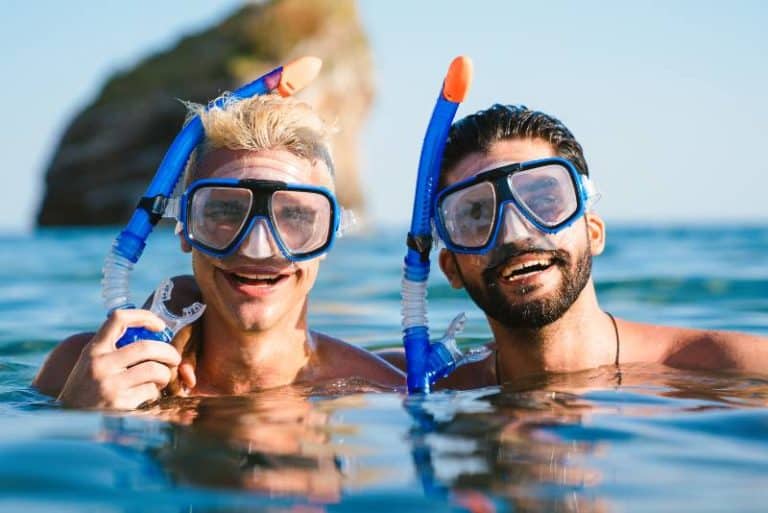From Mountains to Sea: Top Outdoor Activities in Thailand
Are you ready to immerse yourself in the beauty, culture, and adventure of Thailand? With its stunning beaches, lush green forests, varied wildlife, vibrant cities, and fascinating ancient sites – there’s no doubt that you will have a blast visiting this incredible country. Whether you’re looking for a fun new activity or an exciting adventure with friends – we’ve got some great ideas for you!
From taking-in beautiful views on day hikes and exploring amazing historical temples to getting your adrenaline pumping with cliff jumping – there are plenty of outdoor activities when you visit Thailand that are sure to make your trip unforgettable. So read on to discover the top attractions and outdoor experiences that await you during your magical getaway in Thailand.
Thailand’s top outdoor activities range from exhilarating water sports in Pattaya, scenic trekking through Chiang Mai’s lush forests, and tranquil cycling amidst the historical ruins of Ayutthaya, to immersing in Pai’s picturesque landscapes. Whether seeking adrenaline-fueled adventures, cultural enlightenment, or peaceful natural beauty, Thailand’s diverse outdoor offerings cater to all inclinations.
Key Takeaways
- Thailand offers a diverse range of outdoor activities suitable for all types of travelers, from mountain trekking in the North to diving in the South.
- Each outdoor activity offers a unique opportunity to explore the natural beauty of Thailand, allowing travelers to connect deeply with the local environment.
- Engaging in these outdoor activities involves respecting local customs and ensuring environmental sustainability, enhancing the overall travel experience.
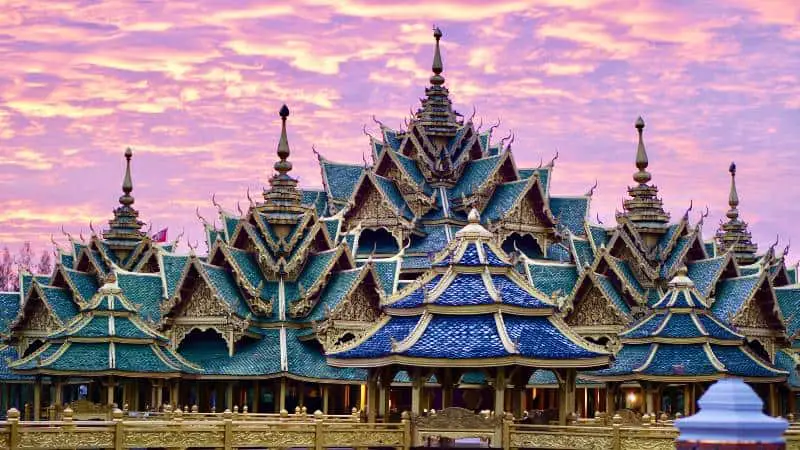
Topographical Wonders of Thailand
Thailand, renowned for its breathtaking topographical diversity, is a land of geographical contrast and beauty that extends from the bustling cosmopolitan heartland of Bangkok to the serene, verdant highlands and the idyllic coastal shores. You can even visit Lumpini Park, the largest park in central Bangkok – it even has an artificial lake!
Let’s begin our journey through Thailand’s topographical marvels with the country’s coastlines, which are undoubtedly one of its most celebrated features. Thailand boasts an abundance of picturesque beaches along the Andaman Sea to the west and the Gulf of Thailand to the east. Phuket, a prized jewel in Thailand’s coastal crown, epitomizes the quintessential Thai beach experience with its blend of soft white sands, clear turquoise waters, and verdant palm fronds.
Meanwhile, the Trang Province offers a more secluded, untouched experience with its myriad of hidden caves, limestone cliffs, and secluded islands that dot the Andaman Sea. The coastal topography is a testament to Thailand’s inherent dynamism, providing both bustling tourist hubs and tranquil nature preserves within a relatively short distance of each other.
As we move inland from the coastal periphery, the terrain shifts dramatically to encompass vast plains and rugged mountains. The Central Plains, also known as the “Rice Bowl of Asia”, is a testament to Thailand’s agrarian roots. This region, dominated by the mighty Chao Phraya River, features flat, fertile lands punctuated by intricate networks of canals and waterways that nourish the endless paddy fields. The ubiquitous greenery serves as a vivid reminder of the country’s deep-seated agricultural traditions and the enduring symbiosis between the Thai people and their environment.
Transitioning from the plains, the landscape begins to ripple and rise into the magnificent highlands in the North. This area, often referred to as the backbone of Thailand, boasts a variety of geographical features ranging from rolling hills to towering mountains. The northern city of Chiang Mai sits nestled in a valley, surrounded by mountains like Doi Inthanon, the country’s highest peak. This region, home to lush forests and terraced rice fields, evokes an aura of tranquility and exhibits a stark contrast to the coastal and plain regions, highlighting Thailand’s impressive topographical variety.
In stark contrast to the peacefulness of the highlands and the serenity of the beaches, the urban landscapes of Thailand offer a completely different experience. The capital city, Bangkok, is a sprawling metropolis, interweaving modern skyscrapers, luxurious shopping malls, and contemporary architecture with historic temples, traditional markets, and the timeless Chao Phraya River.
This juxtaposition of old and new within a dense urban fabric paints a vibrant picture of Thailand’s rapid urbanization while maintaining a strong cultural identity. Other cities, like Chiang Mai and Ayutthaya, provide glimpses into Thailand’s rich historical past through their ancient temples and historical sites, standing in vivid contrast against the backdrop of the surrounding natural beauty.
Furthermore, Thailand’s national parks, such as Khao Yai or Doi Inthanon, offer a rich array of biodiversity. These protected areas, characterized by dense rainforests, waterfalls, and unique wildlife, are fundamental to Thailand’s topography and contribute to the country’s reputation as a biological hotspot.
These areas act as emerald lungs within Thailand, providing a refuge for numerous species of flora and fauna, some of which are endemic to the region, and fostering an appreciation for the country’s rich natural heritage.
In essence, Thailand’s topographical diversity is as vibrant and dynamic as its cultural heritage. Its blend of stunning beaches, verdant plains, rugged highlands, urban landscapes, and dense forests underscores its broad geographical palate, making it an irresistible attraction for those seeking both adventure and tranquility.
Outdoor Activities by Region
Northern Thailand
Northern Thailand, replete with verdant highlands, ethnic diversity, and rich cultural heritage, provides a plethora of outdoor activities for both the adventure-seeker and nature-lover. The city of Chiang Mai and the town of Pai, in particular, serve as the focal points of this region’s outdoor allure.
Chiang Mai, nestled amidst the lush mountains of Northern Thailand, is known as the ‘Rose of the North’. One of its most popular outdoor activities is undoubtedly trekking, which offers an unparalleled way to experience the region’s dramatic landscapes and rich biodiversity. Treks range from single-day excursions to multi-day adventures that take participants deep into the mountains, through the heart of verdant rainforests, past cascading waterfalls, and across vibrant, terraced rice fields.
One such trek, the Doi Inthanon trek, provides the opportunity to explore Thailand’s highest mountain. This trek navigates lush forests teeming with birds and butterflies, leads to breathtaking waterfalls, and offers panoramic vistas from the peak. Along the route, trekkers often encounter hill tribe villages where Karen, Hmong, and other ethnic communities maintain traditional lifestyles, providing a unique cultural dimension to the trekking experience.
Night-time jungle trekking is another unique activity offered in Chiang Mai. This after-dark adventure allows participants to experience the nocturnal wonders of the jungle, complete with the echoing symphony of night-dwelling creatures. The trekking experiences in Chiang Mai, whether through dense jungle trails, up mountainous terrains, or into local communities, offer an immersive way to appreciate the region’s biodiversity, dramatic landscapes, and cultural diversity.
Moving further north, the small town of Pai, often described as a bohemian paradise, is a gem of natural beauty with its picturesque landscapes and tranquil ambiance. Outdoor activities in Pai focus primarily on exploring its stunning natural surroundings.
One such activity is visiting the Pai Canyon, also known as Kong Lan. It is a geological wonder characterized by eroded sandstone creating deep, narrow canyons and offering an excellent spot for hiking and breathtaking sunset views. Due to its unique topography and panoramic views, it’s an absolute must-visit for nature enthusiasts and photographers alike.
For those interested in water-based activities, the hot springs and waterfalls scattered around Pai offer an excellent opportunity. The Tha Pai Hot Springs, nestled amidst a teak forest, provide soothing mineral-rich waters where visitors can enjoy a relaxing soak. In contrast, the Mo Paeng Waterfall is a popular spot for a refreshing dip amidst nature and is often frequented by locals and tourists alike.
Cycling is another popular outdoor activity in Pai due to its relatively flat terrain and scenic rural roads. Whether it’s a leisurely ride through the town’s picturesque outskirts or a more challenging off-road adventure, cycling provides an environmentally friendly and healthy way to explore Pai’s scenic beauty.
Central Thailand
Central Thailand, home to a broad variety of landscapes and historical sites, offers a wealth of outdoor activities that provide both relaxation and cultural enrichment. Two prominent destinations that illustrate this range are Pattaya, a bustling beach resort city, and Ayutthaya, an ancient city steeped in history.
Pattaya, located on the Gulf of Thailand’s eastern coast, is renowned for its beautiful beaches and vibrant nightlife. However, its proximity to the sea also makes it an excellent hub for a myriad of water-based activities.
Jet skiing, parasailing, and windsurfing are prevalent, giving visitors the opportunity to experience crystal-clear waters and warm sunshine from thrilling perspectives. Beginners and experts alike can participate in these activities as there are numerous vendors and schools that offer equipment rental and training courses.
For those who prefer a more tranquil interaction with the marine environment, snorkeling, and scuba diving are fantastic options. The waters around Pattaya, particularly near the nearby islands like Koh Larn, Koh Sak, and Koh Phai, Koh Tao, and Koh Samui are home to an array of colorful coral reefs and tropical fish, providing a vibrant underwater landscape for divers to explore. Scuba diving courses ranging from beginner to advanced levels are widely available, and snorkeling gear can be rented easily, making these activities accessible to all.
Moving away from the bustling beaches of Pattaya to the tranquil ruins of Ayutthaya, you will encounter a dramatically different outdoor experience. Ayutthaya, a UNESCO World Heritage Site, was the second capital of the Kingdom of Siam and thrived from the 14th to 18th centuries. Today, it’s an archaeological park filled with temples, statues, and palaces that narrate tales of its glorious past.
Exploring Ayutthaya typically involves wandering through its sprawling historical park, and visiting the ruins of temples like Wat Mahathat, Wat Ratchaburana, and Wat Chaiwatthanaram. Each site carries its unique allure, be it the iconic Buddha’s head entwined within tree roots at Wat Mahathat or the grandeur of the prang (tower-like spires) and chedis (stupa-like structures) at Wat Ratchaburana.
Bicycling is an especially popular way to traverse the ancient city. The flat terrain and quiet roads make it an enjoyable and flexible way to navigate the vast historical park, allowing visitors to immerse themselves in the city’s historic charm at their own pace. As you cycle from one historical site to another, you not only get a sense of the city’s former grandeur but also an appreciation for the intricate Buddhist art and architecture that still survives today.
Southern Thailand
Central Thailand, home to a broad variety of landscapes and historical sites, offers a wealth of outdoor activities that provide both relaxation and cultural enrichment. Two prominent destinations that illustrate this range are Pattaya, a bustling beach resort city, and Ayutthaya, an ancient city steeped in history.
Pattaya, located on the Gulf of Thailand’s eastern coast, is renowned for its beautiful beaches and vibrant nightlife. However, its proximity to the sea also makes it an excellent hub for a myriad of water-based activities. Jet skiing, parasailing, and windsurfing are prevalent, giving visitors the opportunity to experience crystal-clear waters and warm sunshine from thrilling perspectives. Beginners and experts alike can participate in these activities as there are numerous vendors and schools that offer equipment rental and training courses.
For those who prefer a more tranquil interaction with the marine environment, snorkeling, and scuba diving are fantastic options. The waters around Pattaya, particularly near the nearby islands like Koh Larn, Koh Sak, and Koh Phai, are home to an array of colorful coral reefs and tropical fish, providing a vibrant underwater landscape for divers to explore. Scuba diving courses ranging from beginner to advanced levels are widely available, and snorkeling gear can be rented easily, making these activities accessible to all.
Moving away from the bustling beaches of Pattaya to the tranquil ruins of Ayutthaya, you will encounter a dramatically different outdoor experience. Ayutthaya, a UNESCO World Heritage Site, was the second capital of the Kingdom of Siam and thrived from the 14th to 18th centuries. Today, it’s an archaeological park filled with temples, statues, and palaces that narrate tales of its glorious past.
Exploring Ayutthaya typically involves wandering through its sprawling historical park, and visiting the ruins of temples like Wat Mahathat, Wat Ratchaburana, and Wat Chaiwatthanaram. Each site carries its unique allure, be it the iconic Buddha’s head entwined within tree roots at Wat Mahathat or the grandeur of the prang (tower-like spires) and chedis (stupa-like structures) at Wat Ratchaburana.
Bicycling is an especially popular way to traverse the ancient city. The flat terrain and quiet roads make it an enjoyable and flexible way to navigate the vast historical park, allowing visitors to immerse themselves in the city’s historic charm at their own pace. As you cycle from one historical site to another, you not only get a sense of the city’s former grandeur but also an appreciation for the intricate Buddhist art and architecture that still survives today.
Details of Each Activity
Water activities at Pattaya:
What to Expect: Expect thrilling water sports like jet skiing, parasailing, windsurfing, snorkeling, and scuba diving. These activities will offer you an opportunity to experience Pattaya’s beautiful coastal waters from different perspectives. Snorkeling and scuba diving provides a serene exploration of the colorful underwater world teeming with marine life.
Difficulty Levels: The difficulty varies from activity to activity. Jet skiing, parasailing, and windsurfing might require some level of physical fitness and coordination, but beginners are often able to participate with some instruction. Snorkeling is relatively easy and suitable for most people, while scuba diving requires training and certification, although beginner dive courses are available for novices.
Best Time to Visit: The best time to engage in water activities in Pattaya is during the dry season from November to February when the sea is calmer, and visibility is best for snorkeling and diving.
How to Reach: Pattaya is approximately 150km southeast of Bangkok. It can be reached by a two-hour drive from Bangkok via bus, taxi, or private car. There are also frequent flights from Bangkok to the nearby U-Tapao Airport.
2. Trekking in Chiang Mai:
What to Expect: Expect immersive treks through lush forests, past waterfalls, and into traditional hill tribe villages. The trek can include a mix of hiking, wildlife spotting, and cultural exchange.
Difficulty Levels: The difficulty can vary greatly based on the chosen trek. Some are gentle, suitable for families and less experienced trekkers, while others may require a good level of physical fitness due to the hilly terrain and length of the trek.
Best Time to Visit: The best time to trek in Chiang Mai is during the cool season from November to February when the weather is most pleasant for outdoor activities.
How to Reach: Chiang Mai can be reached by a one-hour flight from Bangkok. There are also overnight trains and buses available from Bangkok.
3. Exploring Ayutthaya:
What to Expect: Expect to explore historical ruins, temples, and statues scattered across an expansive archaeological park. Cycling is a popular means to navigate through the park. But if you prefer more of a physical challenge then renting a mountain bike might be a good option
Difficulty Levels: Exploring Ayutthaya is generally easy and suitable for all fitness levels. If you choose to cycle, the terrain is mostly flat and manageable, although the distance can be quite long.
Best Time to Visit: Ayutthaya can be visited year-round, but it might be most comfortable in the cooler months from November to February. Early morning or late afternoon visits can help avoid the peak heat of the day.
How to Reach: Ayutthaya is approximately 80km north of Bangkok. It can be reached by a 1-2 hour drive depending on traffic. Trains and buses also frequently depart from Bangkok to Ayutthaya.
4. Exploring Pai’s natural beauty
What to Expect: Expect to enjoy the picturesque landscapes of Pai, visiting hot springs, waterfalls, and the Pai Canyon. You can enjoy a dip in the water or go for a relaxing cycling tour through the countryside.
Difficulty Levels: Most activities in Pai are gentle and suitable for all fitness levels. The hike in Pai Canyon can be moderately challenging due to the steep and narrow paths.
Best Time to Visit: The best time to visit Pai is during the cool season from November to February when the temperature is most pleasant.
How to Reach: Pai is located in the Mae Hong Son Province in northern Thailand. It can be reached by a 3-4 hour drive from Chiang Mai, either by bus, minivan, or private car. There are also small planes that fly from Chiang Mai to Pai.
Essential Gear and Precautions
Water activities at Pattaya
Essential Gear:
- Swimwear: Bring comfortable swimwear for water activities.
- Sunscreen: To protect your skin from sunburn.
- Towel: For drying off after your activity.
- Waterproof Bag: To keep your belongings dry.
- Underwater Camera: If you wish to take pictures while snorkeling or diving.
Safety Precautions and Tips:
- Always wear life jackets and other safety gear provided by the service provider.
- Listen carefully to the instructions given before any activity.
- Keep a safe distance from coral reefs and marine life while snorkeling or diving.
- Ensure you are physically fit and healthy before undertaking strenuous water sports.
2. Trekking in Chiang Mai:
Essential Gear:
- Hiking Shoes: Choose sturdy, comfortable footwear.
- Lightweight Clothing: Wear breathable, moisture-wicking clothes.
- Backpack: To carry your belongings and water.
- Water Bottle: To stay hydrated during the trek.
- Insect Repellent: To protect against mosquitoes and other insects.
- Snacks: For energy during your trek.
Safety Precautions and Tips:
- Check the weather forecast before setting off.
- Follow the designated trails and avoid wandering off.
- Always respect local customs when visiting tribal villages.
- Avoid touching unfamiliar plants or insects.
- Ensure you have travel insurance that covers trekking.
3. Exploring Ayutthaya:
Essential Gear:
- Comfortable Footwear: For walking or cycling.
- Hat and Sunglasses: To protect from the sun.
- Water Bottle: To stay hydrated.
- Map: To navigate through the historical park.
- Camera: To capture memories of your visit.
Safety Precautions and Tips:
- Keep hydrated, especially during hot weather.
- Respect the historical sites and refrain from touching or climbing on the structures.
- Wear modest clothing when visiting temples.
- If cycling, always wear a helmet and follow traffic rules.
4. Exploring Pai’s natural beauty:
Essential Gear:
- Swimwear: If you plan to swim at the hot springs or waterfall.
- Comfortable Footwear: For walking or cycling.
- Sunscreen: To protect your skin.
- Water Bottle: To stay hydrated.
- Camera: To capture the beautiful scenery.
Safety Precautions and Tips:
- Be cautious when swimming or rock climbing around waterfalls.
- Wear appropriate footwear when hiking at Pai Canyon.
- If cycling, always wear a helmet and follow traffic rules.
- Stay hydrated and avoid overexertion during hot weather.
You absolutely love this captivating article that I passionately wrote about the mesmerizing and enchanting world Under the Sea in Thailand! Discover the Best Snorkeling Spots in Thailand as you embark on an unforgettable adventure exploring vibrant coral reefs, fascinating marine life, and the breathtaking natural beauty of Thailand’s aquatic wonders.
Get ready to immerse yourself in a world of stunning underwater landscapes, rich biodiversity, and exhilarating snorkeling experiences that will leave you in awe. So grab your snorkeling gear and dive into this remarkable exploration of Thailand’s hidden treasures!
Mae Hong Son Loop
The Mae Hong Son Loop is a well-known route in Northern Thailand that takes you through some of the most breathtaking scenery the region has to offer. Stretching approximately 600 kilometers, the loop traditionally starts and ends in the city of Chiang Mai, leading through the mountainous province of Mae Hong Son and other notable destinations like Pai, Mae Sariang, and Mae Hong Son town itself.
Travelers embarking on this journey are greeted with diverse topography including dense forests, sweeping mountain vistas, terraced rice fields, and numerous hill tribe villages. The loop is rich with opportunities for outdoor activities such as trekking, exploring caves, soaking in hot springs, and visiting waterfalls.
The road itself, while offering magnificent views, is famed for its series of over 1,800 bends and twists, demanding careful navigation. For this reason, it’s popular amongst mountain biking enthusiasts who seek the thrill of the ride in combination with the allure of the scenic backdrop. It’s also possible to travel the route by car or participate in guided tours.
Along the loop, Pai is a popular tourist spot, well-loved for its relaxed atmosphere, riverside setting, and a plethora of cafes. Mae Hong Son town, the provincial capital, offers attractions like the Burmese-style Wat Chong Kham and Wat Chong Klang temples, and the scenic view from the Wat Phra That Doi Kong Mu temple perched high on a hill. Mae Sariang is a quieter town, offering a peaceful retreat with opportunities to visit hill tribes and explore the surrounding nature.
The ideal time to traverse the Mae Hong Son loop is between November and February when the weather is cooler and the landscapes are at their most vibrant after the rainy season. However, it’s recommended to always check the weather conditions before setting off, as the mountainous roads can become challenging during heavy rainfall.
Khao Yai National Park
Khao Yai National Park, located only a stone’s throw away from the bustling city of Bangkok, is a must-visit for nature lovers and adventure seekers alike. Not only is it the oldest national park in Thailand, but it’s also home to an impressive array of wildlife. If you’re lucky, you might even catch a glimpse of the park’s most famous residents: the wild elephants.
These majestic creatures roam free in the park, making for an unforgettable sightseeing experience. Khao Yai National Park is a great place to disconnect from the modern world and immerse yourself in the beauty of nature.
Doi Inthanon National Park
Doi Inthanon National Park, often referred to as the “Roof of Thailand,” is located in the Chiang Mai province. The park is part of the Himalayan mountain range, with Doi Inthanon, its namesake peak, standing as the highest point in Thailand at a soaring 2,565 meters (8,415 feet) above sea level.
Covering an area of 482 square kilometers, the park offers a unique and diverse ecosystem with various species of flora and fauna. This includes over 400 bird species, making it a haven for bird watchers. The flora ranges from tropical species in the lower elevations to temperate forest types, such as pines, oaks, and rhododendrons, in the higher elevations.
The park is not only known for its natural attractions but also for its significant cultural heritage. Visitors can explore several traditional Karen and Hmong hill tribe villages situated within the park’s boundaries.
Moreover, two magnificent chedis (Buddhist stupas), Phra Mahathat Naphamethanidon and Phra Mahathat Naphaphon Phumisiri, were built to honor the 60th birthday anniversaries of King Bhumibol Adulyadej and Queen Sirikit, are located near the summit of Doi Inthanon. These chedis offer panoramic views of the surrounding mountains and valleys.
Attractions within the park include the scenic Kiew Mae Pan Nature Trail, a highly recommended trek that offers fantastic views, especially during the November to February cool season when the weather is clear, and flowers are in full bloom. The park is also home to several majestic waterfalls like Mae Klang, Wachirathan, Sirithan, and Mae Ya Waterfalls, each providing beautiful spots for relaxation and photography.
Doi Inthanon National Park is accessible by car from Chiang Mai, about a 2-hour drive. It is open throughout the year, but the best time to visit is during the cool dry season from November to February. Please note that due to the high altitude, temperatures in Doi Inthanon can be quite chilly compared to other parts of Thailand, so bring warm clothing, especially if you plan to visit early in the morning or stay overnight.

Top Outdoor Activities in Thailand FAQs
Are these outdoor activities suitable for beginners?
Most of the outdoor activities in Thailand are suitable for beginners. However, some may require a good level of physical fitness and prior experience, such as trekking or cycling long distances.
What gear is necessary for these outdoor activities?
Essential gear will depend on the activity chosen. Generally, you should bring comfortable and breathable clothing, sunscreen, a water bottle, a hat or sunglasses, and other items such as insect repellent that may be necessary depending on the activity.
Are there safety precautions or measures for these activities?
Safety precautions and tips will also depend on the activity chosen, but it is always important to stay hydrated and follow instructions given by your guide. Other safety measures may include wearing a helmet when cycling or a life jacket when participating in water sports.
Can these activities be booked in advance or online?
Yes, most activities in Thailand can be booked in advance or online. It is recommended to book these in advance as it will be more convenient and you may also be able to get discounts.
What local customs should be respected while engaging in these activities?
Respect for local customs is essential while engaging in outdoor activities in Thailand. This may include wearing modest clothing when visiting temples, avoiding touching unfamiliar plants or insects, and following designated trails during trekking.
Are there any other important tips about these activities?
Yes, it is advisable to check the weather forecast before setting off and ensure you have health and travel insurance that covers the activity you are undertaking. Additionally, for activities in remote locations, it is important to let someone know where you’re going and when you plan to return. Finally, make sure to stay safe and enjoy your experience!
Conclusion
Exploring the outdoor activities Thailand has to offer, whether that be mountain trekking, diving or something else entirely, is sure to provide travelers with amazing memories and experiences. Not only do these adventures enable the exploration of beautiful landscapes, but they also include moments of interaction with local communities, customs, and culture. Ultimately, engaging in outdoor activities in Thailand paired with respect for nature and the environment results in an unforgettable journey that can never be forgotten.
If you’re interested in learning more about all that Thailand has to offer or if you’re planning a future visit – subscribe to our newsletter for the best information about living in Thailand or reach out to us with any questions you might have!
